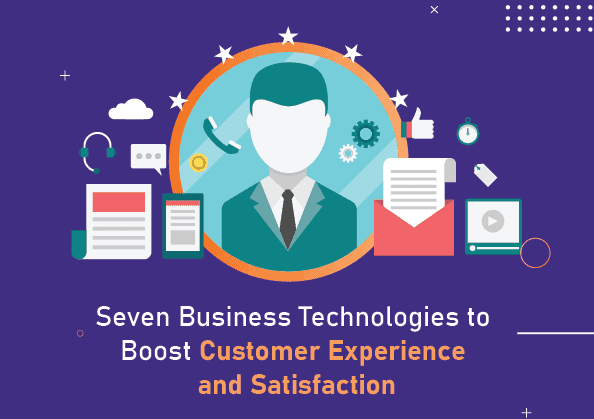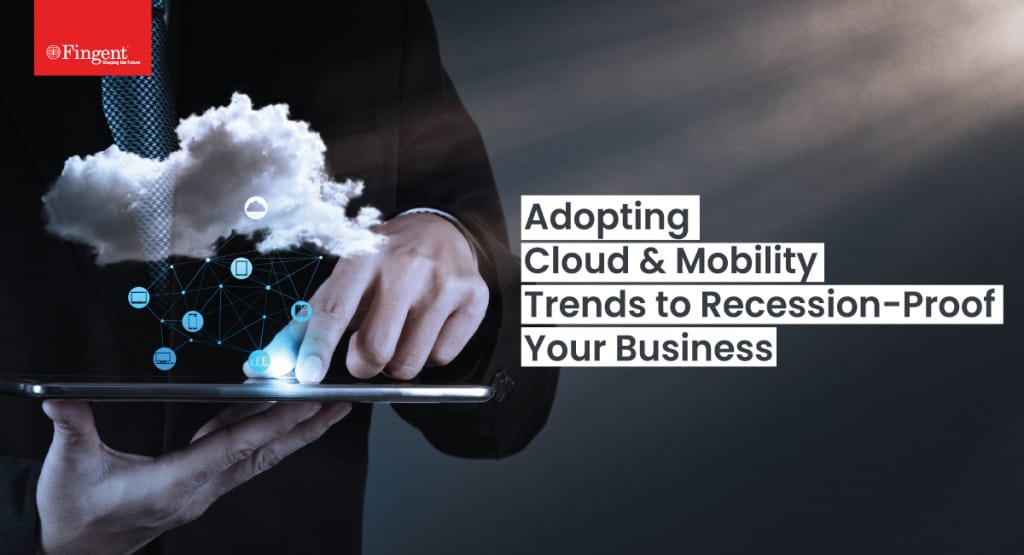Tag: business challenges
Today, technology seamlessly weaves its way into every aspect of our daily lives. That’s precisely what digital transformation is all about – a process that enables businesses to harness the power of cutting-edge technologies and revolutionize the way they operate, engage with customers, and flourish in today’s fast-paced world.
Digital transformation goes beyond a mere trend; it’s a profound shift that can reshape the very core of a business. It allows organizations to metamorphose and emerge stronger and more adaptable than ever before.
In this blog, we’ll embark on an exciting journey to understand the significance of digital transformation, explore its key components, and learn from real-world examples of successful transformations. We will understand why it holds the key to shaping the future of businesses worldwide.
Understanding Digital Transformation
Imagine taking your cherished family recipe and giving it a modern twist with new ingredients, cooking techniques, and flavors. That’s the magic of digital transformation – a process that revitalizes businesses by infusing cutting-edge technologies into their core operations, just like the innovative twist to your traditional recipe!
Which digital technologies enable transformation?
Digital technologies, like cloud computing, Artificial Intelligence (AI), and the Internet of Things (IoT), play a vital role in the business landscape.
The cloud is like a virtual pantry that stores all your ingredients and tools, making them accessible from anywhere at any time. AI acts as your sous-chef, analyzing data, providing insights, and making your decisions more intelligent. Meanwhile, the IoT is the magic ingredient that connects everything, enabling devices to communicate and create a harmonious cooking experience.
The Digital Metamorphosis: Embracing the Ever-Evolving Adventure of Growth
Digital transformation is a thrilling quest to become the best version of what your business is capable of becoming. It’s not a one-time makeover or a sudden transformation, but a continuous journey of growth and improvement. Just like you set new goals and work towards them over time, businesses must shift their perspective from considering digital transformation as a one-time project to embracing it as an ongoing process.
This journey requires a mindset shift – instead of seeking instant results; businesses must focus on long-term gains and stay committed to the process. Digital transformation demands consistent effort and dedication, as every step contributes to overall success.
Benefits and Outcomes of Digital Transformation
The benefits of digital transformation are many, and you will discover more of them as you implement it in your business, but here are a few of its main benefits.
- Enhanced Productivity: Digital transformation ensures mundane tasks vanish from your to-do list, leaving businesses with more time and energy to focus on what truly matters.
- Delightful Customer Experiences: Businesses become experts in customer satisfaction through personalized interactions, seamless online shopping, and responsive customer service.
- Unleashing Agility: Digital transformation enables businesses to respond swiftly to changes and opportunities. They can adapt their strategies, offerings, and operations in the blink of an eye, staying ahead of the competition.
- Unraveling Insights: Digital transformation empowers businesses to harness the power of data, uncovering valuable patterns and trends. These insights guide businesses toward smarter decisions and growth like a treasure map.
- Flourishing in the Digital Kingdom: In this captivating realm, businesses hold a golden scepter of competitive advantage. Digital transformation sets them apart from their rivals, like a crown that marks them as the industry’s leaders. They become the beacon of innovation, drawing customers to their kingdom of products and services.
- Securing the Castle: Digital transformation fortifies its defenses against cyber threats and data breaches. It’s like having a strong shield that safeguards their reputation, customer trust, and sensitive information.
- Sustaining Everlasting Success: Digital transformation is not a one-time invocation but a perpetual journey of growth and adaptation. With every step, businesses evolve and renew their charm, ensuring a legacy of prosperity.
Read more: Is Open Source the Crucial Catalyst For Digital Transformation?

Overcoming Challenges and Embracing Opportunities
A digital transformation journey can empower businesses with the tools they need to thrive in a technology-driven landscape. However, this metamorphosis comes with its own set of challenges and considerations. Let’s dive into these hurdles and discover how to overcome them while achieving your organization’s goals.
1. Organizational Culture and Mindset Shift
- Challenge: The resistance to change can be deeply embedded within an organization’s culture.
- Consideration: Cultivate a growth-oriented mindset that embraces innovation and adapts to new technologies.
- Approach: Foster a culture that rewards risk-taking and encourages open communication to build trust.
2. Change Management and Employee Buy-In
- Challenge: Employees may fear the unknown and be reluctant to embrace new processes or technologies.
- Consideration: Engage employees early on in the transformation process and communicate the vision clearly.
- Approach: Encourage two-way communication, provide training and support, and celebrate small wins to build momentum.
3. Legacy Systems and Technology Integration
- Challenge: Integrating new technologies with existing legacy systems can be complex and time-consuming.
- Consideration: Evaluate the compatibility of existing systems with the new solutions you plan to implement.
- Approach: Develop a well-thought-out integration strategy, and consider phased implementations to minimize disruption.
4. Data Privacy and Security Concerns
- Challenge: The digital era brings increased risks of data breaches and privacy violations.
- Consideration: Safeguard customer and company data to build trust and maintain regulatory compliance.
- Approach: Implement robust security measures, regularly audit systems, and ensure employee awareness of data protection practices.
5. Skills Gap and Talent Acquisition
- Challenge: Finding skilled talent with expertise in emerging technologies can be challenging.
- Consideration: Upskill current employees and promote a learning culture to bridge the skills gap.
- Approach: Collaborate with educational institutions, offer training programs, and consider hiring freelancers or partnering with external experts.
Watch now: 7 Deadly Mistakes Non-Tech Businesses Make on Tech Projects
Success Stories: Real-World Examples
As businesses brace themselves for their journey, they seek inspiration from the tales of industry leaders like Amazon and Netflix. These titans have undergone remarkable digital transformations, leveraging technology to disrupt markets and revolutionize customer experiences.
Staying Relevant like Amazon and Netflix!
- Challenge: Amazon began as an online bookstore, and Netflix was a DVD rental service. Both companies recognized the need to adapt and evolve to stay relevant in the ever-changing digital landscape.
- Solution: Amazon expanded its product range, becoming an online marketplace for various goods and services, leveraging technology to optimize customer experience and supply chain efficiency. Netflix transitioned from a DVD rental service to a digital streaming platform, investing in content creation and personalization algorithms to offer a superior streaming experience.
- Takeaway: Embrace innovation and be willing to pivot when necessary to meet evolving market demands. Continuously focus on improving customer experience to build loyalty and attract new customers. Leverage technology to streamline operations and enhance efficiency.
Unifying and Protecting Data in Healthcare like John Muir Health!
- Challenge: Healthcare companies are often concerned about data security and interoperability while implementing electronic health records (EHRs).
- Solution: Healthcare providers invested in robust cybersecurity measures and interoperable EHR systems to protect patient data and facilitate efficient communication among healthcare professionals. An example is John Muir Health, which “leverages a cutting-edge data platform to unify data while also using the cloud to improve real-time patient communication. As a result, patients can ask questions and receive information through their preferred communication channel, such as email or SMS.”
- Takeaway: Understand the unique challenges of your sector and tailor the digital transformation strategy accordingly. Collaborate with industry experts and technology partners to implement suitable solutions.
Creating Seamless Experiences in Retail like Ikea!
- Challenge: Retailers struggled to bridge the gap between physical stores and online shopping, creating a seamless omnichannel experience.
- Solution: Retailers adopted advanced analytics and inventory management systems to optimize stock levels and offer personalized recommendations to customers across various channels. Ikea, for example, tripled their online sales by prioritizing the digital side of their business!
- Takeaway: Continuously monitor and adapt to the changing needs of customers and the market.
Thriving in the Digital Age: Fingent’s Unparalleled Support for Transformation
The key to sustained business success lies in continuous innovation and adaptation. As organizations strive to remain competitive and relevant, embracing digital transformation becomes imperative. Throughout this journey, Fingent emerges as a trusted partner, offering comprehensive solutions and unparalleled expertise to empower businesses and drive growth.
Fingent’s commitment to excellence and wealth of experience in guiding organizations through successful digital transformations make us a beacon of reliability. By understanding the unique challenges of each industry and sector, we tailor our solutions to meet the specific needs of our clients. From industry giants to startups, Fingent collaborates closely with organizations of all sizes, ensuring that no one is left behind in this technological revolution.
By fostering a culture of innovation and providing the necessary support and training, Fingent top custom software development company helps employees embrace the digital shift with enthusiasm and confidence. Our meticulous planning and phased implementation approach ensure a seamless transition, minimizing disruption and maximizing efficiency.
Reach out to us, and let’s lead you to success on your digital transformation journey.
Stay up to date on what's new

Featured Blogs
Stay up to date on
what's new



Talk To Our Experts
“By failing to prepare, you are preparing to fail.” – Benjamin Franklin
Profound words that underline the importance of business planning. Business planning is the right strategy to ensure business productivity. With business getting more complex and planning tools filling up shelves, enterprises need a more straightforward way to manage business plans and improve sales. Only a few of the many products available have a holistic end-to-end approach to information analytics services.
SAP Analytics Cloud is a distinct analytics tool. It integrates analytics throughout the business process and across every level of an organization. It is an impeccable and compatible solution for enterprises that are involved in sectors like manufacturing, finance, and sales. This is an effective cloud-based tool that can analyze the data irrespective of the size of your firm. Plus, it allows you to transform this data into charts, tables, graphs, and more.
This article will help you determine how SAP Analytics Cloud enables enterprises to improve business planning. Read on to check out the features that will let you boost your business and help you stay competitive.
Top Two Features Of SAP Analytics Cloud For Effective Enterprise Planning
SAP Analytics Cloud is the first and the only tool in business intelligence that caters to all aspects of the business. It assists you in organizing and managing your data visualization, business planning, and predictive analysis.
Here are the SAP Analytics Cloud core planning features:
1. Augmented Analytics
Augmented analytics capabilities can help existing AI-powered analytics to offer business insights in real-time. You can add these capabilities to business planning and workflows. This contains an enhanced ‘Search to Insight’ capability allowing users to ask questions about data in natural language. Further, it can automate insights that include values and simulations.
The ‘Smart Predict’ feature can help train models to predict future outcomes without manual intervention. This enhances user experience allowing business analysts to predict future outcomes more accurately and automate decisions, preventing time lapse. Ultimately, SAP Analytics Cloud smoothens the process and improves business management.
Read more: SAP Analytics Cloud: Creating Dynamic Visual Stories
2. Enterprise planning
Collaborative enterprise planning ensures one version of the truth across the enterprise. Thus, it brings users together to align with the plan leading to better business outcomes.
The zero-based budgeting feature helps allocation of resources efficiently. The embedded collaboration tools ensure that every member of the finance team is aware of relevant information while they discuss finance issues. Plus, all the relevant budget templates are recorded and saved for the quick action and enhanced productivity.
SAP Analytics Cloud allows its users to analyze, plan and predict at one location. This can speed up planning cycles and help make informed decisions. Built-in features such as financial modeling, automated reporting enable enterprises to make better end-to-end planning decisions.
Planning and consolidation applications allow businesses to connect complex planning processes to the cloud. Thus, enterprises can create business plans and adjust them within the SAP Analytics Cloud. This allows enterprises to extend and align their plans across the organization leading to better outcomes.
Read more: Business Intelligence in SAP: How It Helps You Become a Data-driven Organization
Features That Improve Agility In The Enterprise Planning
1. Data and data visualization
Data visualization represents your entire business process. It is this important to find all the possible ways of viewing and understanding the data at a glance. This is where SAP Analytics Cloud can help. It can help make your data highly visible. These analytics offer quick answers to critical questions that can improve your business decisions.
Businesses need to gather enormous amounts of data each day from all their departments and other sources in sales. The next challenge is storing all this data in a secure place. SAP Analytics Cloud is the perfect place to store your data as it is most secure and easily accessible to all relevant people in your organization.
Read more: 7 Crucial Business Challenges Solved by SAP Analytics Cloud
2. Models
You do not need technical expertise to create a model from unrelated data sets of your company. It is quite similar to adding data to a story. Depending on the type of data, your models can either be simple or complex.
In any case, models help you organize present your data so that you can gain insights into your business. The models in SAP Analytics Cloud organize and present the data in rows and columns. This offers a unique, clear view of your data that is ready for analysis.
3. Stories
Stories occur in two phases: data view and pages. These two capabilities can enable you to gather data and connect it to create a model. This model is refined when you add data to make a story. These stories can empower you to make quality decisions for the success of your business.
What Are The Benefits Of SAP Analytics Cloud?
SAP Analytics Cloud offers many benefits for enterprises that are on the SAP. Here are a few:
1. Access data on the fly
SAP Analytics Cloud can be integrated to work both on Android and iOS devices alike. It allows your users to manage all their business activities even on a small screen from anywhere, at any time.
In today’s fast-moving world, your finance team needs the ability to create viable forecasts at a moment’s notice. Using SAP Analytics Cloud will enable your business process to remain proactive, not reactive.
2. Real-time insights
SAP Analytics Cloud functionalities allow all relevant users to generate instant insights to enhance decision-making and improve business outcomes.
3. No more silos
SAP Analytics Cloud allows for integrated planning across your organization. This means you can rest assured that all those involved in the decision-making process have the whole picture, not just a small part.
4. Customized dashboard
Enterprises are always on the lookout to improve data visualization, which helps in having a better interface for successful operations. Thankfully, SAP Analytics Cloud allows its users to customize their dashboards to help them navigate through the system and offer a personalized look. This way, business owners have relevant data on their interface just the way they like it.
5. Increased efficiency
SAP Analytics Cloud facilitates easy collaboration across your organization. This allows for quicker approvals, contributions, and comments. Plus, automation and ML helps in creating plans that are more productive, leading to faster results.
6. Minimize errors
Integrating SAP Analytics Cloud with SAP S/4HANA will allow the enterprises to minimize or eliminate errors that occur while making changes on multiple files on the cloud. You can make changes without manual intervention in the source system.
Read more: SAP S/4HANA Journey: 8 Ways C-level Leaders & Executives Can Derive Business Value
Power Charge Your Business
SAP Analytics Cloud is unique. It offers businesses real-time data to manage their resources effectively. Their tools keep getting newer updates to make it more reliable. As an SAP Silver Partner, Fingent has the expertise necessary to help you make the best use of this power-packed tool. Let us discuss your business and see how SAP Analytics Cloud can help you. Call us.
Stay up to date on what's new

Featured Blogs
Stay up to date on
what's new



Talk To Our Experts
Technology is getting better and better each day. Several technologies and architectural patterns have emerged and evolved during the past few years, and it only gets better with time. Microservices architecture or microservices is one of those patterns. It emerged from the world of domain-driven design and persistence.
In this article we will cover:
- What is microservices architecture?
- The difference between microservices, monolithic architecture, and service-oriented architecture (SOA)
- The benefits and examples of implementing Microservices Architecture.
What Is Microservices Architecture?
Microservices architecture is a specific method of designing software systems that can structure a single application as a collection of loosely coupled services.
Microservices architecture is made up of several components in their own individual compartments in the software. This makes them independently upgradeable or replaceable.
Microservices architecture simplifies the process of building and maintaining certain types of applications by breaking them down into many smaller pieces that work together. Though this increases the complexity, it offers greater advantages over the monolithic structure.
Now you may wonder: Isn’t Microservices just another name for monolithic architecture and service-oriented architecture (SOA)?
Let’s clarify that for you!
Read more: Progressive Web App Development: 10 Benefits
Microservices Architecture Vs. Monolithic Architecture
In the current age of Kubernetes, Monolithic architecture faces many limitations. Please note a few:
- Monolithic architecture is a single application. It is generally released once a year with the newest updates. Whereas, Microservices architecture is cloud-based and can be updated as required.
- Monolithic architecture is slow. Modifying a small section may require complete rebuilding and deployment of the software. Microservices on the other hand are faster to deploy and quick to isolate any defects.
- Monolithic architecture is harder to adapt to the specific or changing product lines while individual models of Microservices architecture enable scaling and development.
Microservices Architecture Vs. SOA (Service-oriented Architecture)
Microservices architecture is distinct from SOA. Here are a few differences:
- SOA model is dependent on ESBs and so it is slower. Whereas, microservices is faster as it leverages faster-messaging mechanisms.
- SOA focuses on imperative programming style, while microservices focuses on a responsive-actor programming style.
- SOA has an outsized relational database. But Microservices architecture tends to use NoSQL or micro-SQL databases.
Read more: Ways To Accelerate Business Growth and Success in 2021
Business Benefits Of Microservice Architecture
Microservices architecture can help your business grow quicker, increase productivity, and innovate better to deploy competitive products into the market. Here are some specific benefits of the Microservices architecture:
1. Better organization for efficiency
Microservices architecture organizes business applications. It can extend those applications to support plugins for new features, devices, etc. You can easily add more features to each of those popular applications to generate more revenue.
2. Increased scalability
Microservices architecture divides applications into smaller modules. Each of these modules can operate independently enabling businesses to scale applications up or down, as required. As these modules operate independently, a fault in the single module does not mean disruption of the entire system.
If one module fails due to outdated technology or the inability to further develop the code, developers can use another module. In other words, the applications continue to function even when one or more modules fail.
This capability allows developers the freedom to build and deploy services as needed without having to wait for the entire application to be corrected.
3. Easy to maintain
It is easier to maintain and test a single module as opposed to an entire system. Since each module has its own storage and database, organizations can build, test, and deploy all the modules with less complexity.
4. Faster development
Since all modules are loosely coupled, change in one module does not affect the performance of the other. This means you can update a single module at a time leading to faster development.
5. Enhanced performance
Microservices architecture can enhance the performance of the application. It reduces downtime while developers take their time to troubleshoot the issue and bring the system back to normalcy.
6. Dynamic yet consistent
The individual modular approach in Microservices architecture is easy to replicate. This allows for consistency in applications, which in turn makes managing these modules simple and easy.
Prominent Examples of Successful Microservices Implementation
Prominent examples of Microservices architecture are Amazon, Netflix, Uber, and Etsy. Over time these enterprises refactored their monolithic applications into Microservices-based architectures. This move has helped to quickly achieve scaling advantages, greater business agility, and unimaginable ROIs.
1. Amazon
In the early 2000s, untangling dependencies was a complicated process for Amazon developers. It faced development delays, coding challenges, and service interdependencies.
However, Amazon assigned ownership to each independent service team. This allowed the developers to identify the bottlenecks and resolve issues more efficiently. Also, it helped them create a very highly decoupled architecture.
2. Netflix
Within a year of starting its movie-streaming service, Netflix was suffering from service outages and scaling challenges. It experienced major database corruption and was on standstill for three days! That is when it decided to move towards more reliable, horizontally scalable systems in the cloud.
First, Netflix moved its movie-coding platform to cloud servers as an independent microservice. This allowed Netflix to overcome its scaling challenges and service outages.
3. Uber
Uber, the ride-sharing service faced growth hurdles. It struggled to launch new features, fix bugs, and integrate its global operations. Besides, it became increasingly difficult to make minor updates and changes to the system.
Uber then decided to move to cloud-based microservices. This allowed its developers to build individual functions like trip management or passenger management. This boosted the speed, quality, and manageability of their services. Among other things, they achieved more reliable fault tolerance.
4. Etsy
Etsy experienced poor server processing time. However, with the help of Microservices architecture, Etsy created a variety of developer-friendly tools and went live in 2016. From that point forward, Etsy benefits from a structure that supports continual innovation, faster upgrades, and more.
Read more: Enterprise Resource Planning Software: A Complete Guide!
How Fingent Can Help You Implement Microservices Architecture
Microservices architecture supersedes SOA and monolithic models. However, it has its challenges. This is where Fingent comes to your assistance.
Fingent can help you implement Microservices Architecture correctly to improve your productivity and ROI. Designing your architecture is not just a technological option. It is a necessity! It is a business decision that can directly affect your business growth. Fingent can help you take care of the technical aspect while you concentrate on your business goals. Give us a call and let’s get talking.
Stay up to date on what's new

Featured Blogs
Stay up to date on
what's new



Talk To Our Experts
How Organizations Can Embrace Transformation and Expedite Their Growth in 2021
From remote working and e-learning to sales and customer service to more critical cloud infrastructure and security, the COVID-19 pandemic has accelerated technology adoption across several key domains. The pandemic has made digital transformation crucial for business growth across various industries. Satya Nadella, the CEO of Microsoft, puts it that “We’ve seen two years’ worth of digital transformation in two months.”
That said, companies will have to change their mindsets and adopt new strategies to stay relevant and competitive in 2021 and beyond. Here are six ways you can adapt to the new normal and taste business success.
Read more: How Business Owners and Leaders Can Set up a Successful COVID Exit Strategy
1. Adapt to change
Change is the only constant and more so today than ever before. Change is happening at a faster pace and is very crucial for small businesses. Today, old and traditional methods of winning clients and serving them do not seem to fit. The list of things you need to change may be long and only growing. Instead of reacting to these changes, the best approach is to embrace them and treat them.
So, when you treat the problem, you employ change to work with you and not against you. People are more likely to accept strategic changes now, especially if the initiatives are focused on improving their lives.
Bring agility and innovation to your business by implementing a quarterly strategic planning and review process. It will allow you to remain focused, actionable, and agile by adopting new learnings.
While you are in the process of adapting to changes, consider a few questions that you need to ask yourself.
- What can disrupt my business and change everything?
- How can I lead that change?
- How can I ensure that my business stays relevant and profitable in the next five years?
Read more: Top 5 Organizational Imperatives for Business Leaders to Become Winners in the New Normal
2. Customer always comes first
As consumer needs keep evolving, you have to think of ways to meet the new supply and demand to stay relevant and competitive.
Social distancing due to the pandemic has left many businesses struggling—for instance, physical retail stores, manufacturers, automotive, banks, etc. Many product-based companies face significant issues related to manufacturing and distribution. Service-based companies are also suffering due to poor customer demands. In short, business models should be revamped so that they are immune to new challenges.
The pandemic has even changed customers’ needs and preferences.
One of the best ways is to engage in a conversation with your clients to identify opportunities. You could probably start by asking a probing question at the end of the conversation with your client. You may also conduct surveys or quarterly client advisory groups to follow a more formal process.
To stay relevant, you will have to prioritize customers’ needs and problems. It is imperative for future growth and innovation.
View Infographic: Business technologies to boost customer experience and satisfaction
3. Implement automation wherever possible
Working smarter means hiring and collaborating with the right talent. Encourage teamwork for removing the bottlenecks and hurdles. It will translate to more revenue with the available resources. Effective workplace collaboration will also boost your team’s morale and reduce lay-offs.
Leverage technology and systems to streamline your business and allow it to run smoothly. According to Gartner, by 2024, businesses will see a 30% reduction in their operational costs by combining hyper-automation technologies with redesigned operational processes.
Identify processes that can be automated and evaluate how automation will enhance your customer service and experience.
Read more: What Makes a Business Process Apt for Automation
Automation of repetitive, routine, and mundane tasks saves your workforce’s productive hours and spares them for more crucial tasks. Automation enhances your organizational efficiency and offsets growth investment.
4. Speed is the key to sustain in 2021
The pandemic has made companies rethink their conventional organizational models and pushed them to adopt new ways of working at speed. Flat structures empowering decision-making are replacing the traditional management-led hierarchies. It enables companies to perform with improved speed and precision. For instance, PepsiCo adopted newer working models to enable fast and easy access to their products during the pandemic. Within 30 days (from concept to execution), the company launched two direct-to-consumer (D2C) websites.
5. Adopt digital commerce
The pandemic has spurred digital commerce like never before. Deloitte’s 2020 holiday retail survey reports that contactless shopping experiences enjoyed a huge spike in demand during the holiday season last year. Over 73% of shoppers planned to have orders delivered to their doorsteps as against 62% in 2019.
Read More: Contactless Retail Delivery Software – How Retailers Can Revive Sales While Adhering To Social Distancing Norms
Companies should accelerate and optimize both B2B and B2C digital commerce channels by developing custom retail software solutions to enjoy the benefits of e-commerce sales and ROI.
As customers demand efficiency and speed, organizations must give precedence to customer experience to overcome competition.
In 2020, Adidas established itself as a top digital commerce player targeting $4.9 billion in online sales, almost 12% of their overall business. In the future, the company expects it to rise to 25%. Also, they were quick to recover from the pandemic impact with an increase in online sales during the lockdown.
Read more: 5 Transformative Trends Ushered by B2B E-commerce in Healthcare and Life Sciences
Fingent leverages innovative and emerging technologies to help digital retailers and e-commerce businesses
Fingent helps retailers build custom retail software solutions, e-commerce, and mobile commerce apps that help you deliver exceptional customer service and experience, just like your physical retail store. Fingent helps retailers and e-commerce brands develop Augmented Reality-based solutions that allow their customers to preview objects in 3D. Using AR technology, both online shoppers and in-store buyers can choose their preferred products without the hassle of buying the wrong ones. We enable companies with an e-commerce presence to build AR applications through web platforms (WEB AR), avoiding the need for separate mobile apps.
Read more: Technology Investments: How to gain maximum value?
6. Ensure customer data privacy and protection
Data transparency is imperative. With the rise in going digital, the total amount of data created, captured, and consumed will more than double by 2024 globally. A 2019 Factual survey reveals that more than 50% of the US smartphone users will be ready to share their geolocation details with a service provider only if they are aware of how the information will be used. When customers realize the benefits of sharing personal data, such as online behavior, shopping history, mobile app usage, or geolocation tracking and trust that their data will be protected, they will be more willing to share it.
Jersey Mike’s Subs, a US sandwich chain, has a transparent privacy policy that lets you know which customer data they collect and how it is stored and used. Approaches like these that give consumers clarity and control over their personal information will define personalization and enhance customer experience.
Consumer data privacy acts such as General Data Protection Regulation (GDPR) for the European Union (EU) and European Economic Area (EEA) and the California Consumer Privacy Act (CCPA) aim at ensuring consumer privacy rights and data protection under the respective regional, state, and federal laws. These acts allow consumers in the respective regions to see all the information companies have saved on them and how the data will be protected and used.
We help ensure smooth business transformation in 2021
As we try to recover from the crisis, it is essential to consider what the future looks like for your business. Your organization must adopt new technologies, innovation, and new practices to ensure a smooth business transition. It also helps you meet the growing customer demands.
Reach out to us and let us help you accomplish a seamless business transition through modern technology adoption.
Stay up to date on what's new

Featured Blogs
Stay up to date on
what's new



Talk To Our Experts
What are the steps involved in a tried and tested cloud migration strategy?
Cloud is becoming an integral part of today’s market. More and more companies are adopting it. Commenting on the statistics of cloud adoption, Hosting Tribunal said that “the hybrid cloud is the weapon of choice for 45% of enterprises.” Also, it forecasts that the public cloud service market is expected to reach 623.3 billion dollars by 2023 worldwide. Why is cloud adoption so popular right now? Is cloud necessary in today’s market? What is the best cloud migration strategy for a smooth transition? These questions will be addressed in this article.
Is cloud necessary in today’s market?
“Cloud computing is not only the future of computing but the present and the entire past of computing.”
– Larry Ellison, Oracle.
Not so long ago, enterprises had to establish and maintain their own server to host and run applications on their premises. Today, cloud computing is revolutionizing all operations of the business world. Though relatively new, this technology became the cornerstone for the digital transformation of enterprises. Cloud technology provides companies with on-demand data storage, computing power, and many other cloud services. These services are maintained by service providers at remote data centers.
By partnering with a cloud migration services provider like Fingent, you can easily overcome the challenges that come with sudden operational demands, higher operational expenses, and ineffective processes. This frees your business and employees from maintenance issues.
Read more: Why It’s Time to Embrace Cloud and Mobility Trends To Recession-Proof Your Business?
Here are a few more compelling reasons why the cloud is necessary for today’s market:
1. Cost-effective
Cloud computing is a subscription-based model. That would mean there are no purchasing, labor, or maintenance costs. Since cloud computing is a technology that provides services to companies, you only pay for what you use. This allows you to optimize your budget more efficiently.
2. Digital transformation
The traditional ways of operation are becoming too costly and obsolete. Digital transformation is the surest way to remain competitive in today’s market. Digital transformation occurs when a company uses a cloud migration strategy to migrate all business operations to the cloud.
3. Data backup and recovery
One of the greatest benefits of cloud computing is cloud storage. That means cloud makes data accessible and usable, even remotely. Such accessibility does not expose data to risk because, in the cloud, data is never stored in one place. It is split into fragments and encrypted before it is distributed across various locations. This also ensures that your data is protected from cyber-attacks or natural disasters.
While there are many benefits of cloud migration, you must exercise caution. Miguel Angel Borrega, Senior Director Analyst at Gartner warns: “Through 2024, 80% of companies that are unaware of the mistakes made in their cloud adoption will overspend by 20 to 50%.” What is the solution? A well-planned cloud migration strategy!
Read more: 7 Common Mistakes Non-Tech Businesses Commit While Taking Up Tech Projects
7 steps involved in cloud migration strategy
Having a cloud migration strategy ensures you do not miss any essential steps during your move to the cloud. Use the steps below to create a cloud migration strategy and make your transition as smooth as possible.
1. Understand and select cloud migration options
Each company has its own peculiar scenarios. Understanding these will help you choose from all available options for a smooth migration. These options could range from leveraging an existing application workload environment to rewriting the application partially or even wholly. These options are:
- Lift and shift/rehosting
- Extend to the cloud
- Cloud optimized
- Cloud-native
- Replace with SaaS
2. Set up a cloud management team
The first step is to create a cross-functional team to oversee the transition. This team should be capable of managing the migration from start to finish. Cloud migration teams serve as a central point of contact. This team includes representatives from each department who would either be hosting or using the applications in the cloud.
They must ensure the following:
- Adjust applications before migration begins
- Monitor each application as it moves to the cloud
- Address any functionality issues
- Collect and implement feedback from users
3. Pick the right platform and provider
Don’t make the mistake of picking the first option you come across. Before making a choice compare different cloud platforms and migration models and then pick the one that best suits your business. Here are the three principal levels of cloud platform services:
- Infrastructure as service (IaaS)
- Platform as a service (PaaS)
- Software as a service (SaaS)
After you choose the level of service, pick the cloud provider that works best for your business.
Read more: Cloud Service Models Saas, IaaS, Paas – Choose the Right One for Your Business
4. Collect baseline analytics
Ensure to collect baseline analytics before you move anything to the cloud. Such pre-migration data provides you a basis for comparison when you run analytics on your cloud-based applications. This will help you see how speed, user experience, and other metrics have improved. This also allows you to understand when something goes wrong during the transition and correct it.
5. Gauge and Address Security Risks
Implement cybersecurity to protect sensitive data. Ensure security at your end and in the cloud. Most importantly, ensure that the migration itself is secure. According to Forrester, 43% of internal data breaches were from accidental mishandling of sensitive information. You must evaluate and address any security issues before migrating any applications or data. This will prevent data breaches.
Read more: Safeguarding IT Infrastructure From Cyber Attacks – Best Practices
6. Initial strategy: Move a single application as a test
Now that everything is in place for a smooth migration, you must be eager to make a complete shift as soon as possible. Hold on! Starting small is a wise cloud migration strategy. First, move one application or a group of applications that do not have a lot of dependencies. Once it starts running in the cloud, evaluate its performance. That first app will help you make pre-migration changes to the rest of the applications.
7. Refine and finalize your strategy: Measure post-migration performance
Once the migration is completed, measure the performance of all your applications with the help of KPIs. Comparing the performance data will help you see how performance changed after cloud migration. That data can be used to make logging improvements and to detect problems. At this point, if you notice errors or low-performance levels, you can address these quickly before they cause any significant downtime.
Read more: Cloud Migration: Essentials to Know Before You Jump on the Bandwagon
No-brainer
Cloud computing is called a “no-brainer” because it offers enhanced security, stability, and greater flexibility. To completely benefit from it, companies must have a successful cloud migration strategy. The success of migration depends on meticulous planning and consideration of every aspect of your business. The seven-step cloud migration strategy given above will ensure an easy migration for your organization. Partner with us to ensure that your cloud migration strategy goes without a glitch and propels you to success.
Stay up to date on what's new

Featured Blogs
Stay up to date on
what's new



Talk To Our Experts
Cloud and Mobility: The two pillars to recession-proof your business
- Introduction
- How Does the Recovery Shape of The Coronavirus Recession Look?
- What is a recession-proof business?
- What can business leaders do now?
- How Do Enterprise Mobility Solutions Help in The Current Crisis?
- Five Unique business benefits of enterprise mobility during recession!
- Recession-proof your business by embracing Cloud
- Cloud is not a future aspiration rather an urgent mandate
- How can you capture the full value of the Cloud to recession-proof your business?
- Staying Afloat Despite the Crisis
- Are You Keeping Up with The New Normal?
Introduction
In just a matter of weeks, the COVID-19 pandemic has chopped off nearly a third of the global market cap triggering panic across the world and shaking the confidence of investors. According to an analysis by the World Bank, the “coronavirus disease pandemic and ensuing lockdowns in several parts of the world have led to a recession unmatched in eight decades.”
The coronavirus-inflicted recession which started unfolding itself in February and March of this year has left the macroeconomic landscape in a state of dilemma. For the past six months, business leaders have been trying to navigate shattered expectations and continued uncertainty forcing them to rapidly shift their expectations for the future. During the Great Recession of 2007 to 2009, unemployment soared to almost 10 percent by January 2009. From then on, recession-watchers have been equipped for the reversal of fortunes.
The economic distress caused by coronavirus may be the trigger that leads to a prolonged slump. If so, it is time for workers, investors, and entrepreneurs to seek refuge in recession-proof business practices. This article explains why it is the perfect time to recession-proof your business through cloud and mobility trends.
How Does the Recovery Shape of The Coronavirus Recession Look?
Recession is defined as a significant decline in economic activity lasting more than just a few months and is evident in decreased levels of real income, real GDP, industrial production, employment, and wholesale-retail sales. According to the forecast by the World Bank, the global economy will shrink by 5.2% by the end of this year culminating in the deepest recession since the second world war. The World Bank Prospects Group Director Ayhan Kose noted, “the Covid-19 recession is singular in many respects and is likely to be the deepest one in the advanced economies…The current episode has already seen by far the fastest and the steepest downgrades in global growth forecasts on record. If the past is any guide, there may be further growth downgrades in store, implying that policymakers may need to be ready to employ additional measures to support activity.”
Thankfully, all recessions including the present recession will not last forever. The economy will reopen at some point and start growing again. Unfortunately, the uncertainty of the times makes recovery shapes more widely dispersed. Recovery shapes are not about speed but more about the eventual return to pre-crisis levels. Therefore, the expectation for the path of recovery is hotly debatable. Perhaps we can confidently say that full return to the pre-crisis stage looks ever more challenging with the passage of time.
This raises a few pertinent questions:
- Can any business be recession-proofed?
- What can business leaders do?
- How do enterprise mobility solutions help in the current crisis?
- How can they leverage technology to recession-proof their business?
Read more: Navigate Business Impact Of COVID-19 With These Hot Technologies
What is a recession-proof business?
Recession-proof businesses are defined as industries that can stay afloat during terrible economic times or somehow survive unscathed or a business that has a better chance of riding out a recession.
What can business leaders do now?
Debatably, six months into the corona crisis, economic outcomes are not quite certain. Yet, business leaders can take these steps to prepare for the next phase of the corona crisis.
1. Prepare early
A key to surviving any recession is to act as early as possible. The willingness to make strategic and necessary moves decides if a business is weathering the storm of economic downturn or is sinking their ship.
2. Take stock
As economies reopen with varying degrees of success, now is the right time for business leaders to take stock and to reallocate resources appropriately. Take a realistic look at what is possible for your business and accept what is not possible. This is an important step towards creating goals that fit the new normal.
3. Build resilience
COVID-19 has demonstrated an immense power to surprise and upend well thought out assumptions about how business works and who is likely to win. Businesses should thus actively prepare by creating optionality to maneuver. You may have to shift your mindset from growth to survival.
4. Capture advantage
Leaders must leverage all technological trends to reinvent their superpower. Explore crisis-specific solutions to adapt to the new normal faster than ever before.
Read more: Fingent’s Response to COVID-19 Business Implications
How Do Enterprise Mobility Solutions Help in The Current Crisis?
Enterprise mobility solution services basically refer to solutions for businesses that enable employees to use their personal mobile devices securely from anywhere to enhance productivity for the company. For example, an employee should be able to access any uploaded data at any given point through any device that’s available such as a Smartphone, Laptop, or Tablet, and carry out tasks required by the company and thus increase productivity.
What does it offer?
Enterprise mobility offers employees flexibility, freedom, and choice. It can make a huge positive impact on their job satisfaction while increasing their work hours. Most businesses practice enterprise mobility in some way. Along with work flexibility, it helps businesses to maximize profits and reduce costs.
Five Unique business benefits of enterprise mobility during recession!
During the recession, enterprise mobility offers endless opportunities that help broaden the sphere of your customers and your business.
1. Improved employee productivity
Mobile applications mechanize paper-driven procedures to streamline work processes. This brilliant approach enhances information exactness and grants clients access to updated and often real-time data. During situations such as a lockdown, it allows companies to build propelled functionalities improving employee productivity.
2. Reduces operational cost
Since the implementation of enterprise mobility enables employees to work from home, it is bound to minimize the cost of your infrastructure drastically. Also, if it becomes necessary for some employees to come to the office, mobility solutions can enable workspace collaboration for your mobile environment across multiple platforms and devices.
3. Efficient collaboration
When many employees work on the same project, they will have to coordinate with each other regularly. With enterprise mobility solutions they can easily share data and important information through mobile devices, update their work progress, and collaborate continuously.
4. Data security
Security is one of the most important requirements of any enterprise. Enterprise mobility management offers businesses the necessary levels of data security and risk management allowing a secure communication medium.
5. Provides customer satisfaction
Customer service is the top business priority for all enterprises. Enterprise mobility facilitates quicker customer service increasing the customers’ trust in your business.
Read more: Enterprise Mobility Apps for Faster Business Growth
Recession-proof your business by embracing Cloud
Though cloud computing was increasingly adopted by large companies and startups in the last few years, the work-from-home culture during the pandemic has highlighted the critical advantages of using cloud-based solutions. Cloud integration services have open, continuous assistance, and discounts for their customers and prospective clients.
Internal cloud services can provide resources and orchestrate the entire application stack across different servers. The external cloud services can easily leverage the scale of application and infrastructure while providing an enhanced computing environment. This way, cloud solutions create several opportunities for both service providers and clients. It eliminates unnecessary spending of resources for work, successfully reducing the costs involved.
Read more: Top 6 Reasons Why You Should Move to a Cloud-Hosted ERP
Cloud is not a future aspiration rather an urgent mandate
Though the concept of cloud is not new, most enterprises remain in on-premise data centers. The current pandemic has reinforced the fact that the cloud is an urgent mandate at the heart of all businesses. You need an intelligent cloud journey that balances speed and value. Each migration should be started by mapping out the journey and determining how the cloud will empower the overall business strategy and goal. Once you migrate the majority of your workload to the cloud, you will be able to realize the full business value of the change. You will see how it makes your business resilient, efficient, and customer-focused.
How can you capture the full value of the Cloud to recession-proof your business?
1. Migrate at scale
The first step would be to align the entire enterprise including strong leadership from the top to provide direction. Second, focus constantly on realizing value throughout the migration process without getting stuck in a pattern of aimless experimentation. Finally, weigh out the cost savings against application complexity, data-location compliance requirements, and legacy needs. Realize the potential value and innovation that can be unlocked through cloud optimization.
2. Modernize
For your business to work with speed and agility, you need to think comprehensively about the data flow across all your systems. Hence, carefully consider your modernizing needs and long-term process that are based on a solid application discovery assessment. While planning a strategy, take into account where the organization is headed and why. Doing this will make you a cloud-first enterprise.
3. Optimize
Constantly monitor and optimize cost and capacity, manage consumption and performance, and leverage the right services from cloud providers to maximize the value/performance ratio and sustainability.
4. Innovate
Since the cloud enables experimentation at speed, try out several ideas at the same time and point to the right one quickly and securely. Gain access to cutting-edge technologies by collaborating with your partners.
Read more: Cloud Service Models Saas, IaaS, Paas – Choose the Right One for Your Business
Stay up to date on what's new

Featured Blogs
Stay up to date on
what's new



Talk To Our Experts
Challenges Your Business Should Overcome in the Post-COVID Phase
- Introduction
- Challenges in Reopening Strategy
- Challenges of Shifting Customer Habits
- Challenge of Operations and Employee Safety
- Impact on Operations for Manufacturing Units
- Challenges of Finance and Banking
- Tax, Trade & Regulatory Challenges
- Crisis Management
- Focus on tomorrow
Introduction
The past few months have been an extremely challenging time for communities across the globe as the pandemic continues to take its toll. Amidst all the chaos and anxiety however, the world is trying to return to the new normal. During this unprecedented reality, businesses are witnessing the beginning of a dramatic restructuring of economic and social order. Everyone is looking forward to the next normal that will materialize after the battle against COVID-19 has been won, with hopes that it will be better and more profitable. Challenges lie ahead though. What are these COVID-19 Aftermath challenges and how do we combat them? This article will discuss that.
Where Do We Start?
With lives and livelihoods in danger, businesses are running a spreadsheet for basics that never mattered so much before. Plans are being drawn how many people can fit into a workplace spaced six feet apart, where the one-way path should begin and end, and what adjustments can and need to be made to the entrance, lunchrooms, and restrooms.
All of these are critical tasks but chalking them down is not going to be enough to mobilize and stabilize businesses. We need an enterprise-wide ability to absorb uncertainty while incorporating lessons into operating models quickly. This might seem like a daunting path beset with challenges, but an action plan can get you through this successfully. This article discusses 7 major challenges and resolutions to jumpstart the recovery.
Read more: 6 Hot Technologies that Handhold Businesses Amid COVID-19 Impact
1. Challenges in Reopening Strategy
The pandemic has impacted nearly every industry including retail. Manufacturing is on a downward slope as production moves at a snail’s pace. Supply chains are being disrupted due to higher air freight costs. This supply shock is having a knock-on effect on retail. Navigating their way out of this spiral is going to need a solid reopening strategy.
Read more: Contact-less Services: The New Normal in Retail
What can businesses do?
- Restart and reset, not just reopen: Employee and customer behaviors have drastically changed. Be ready to start a new era of business. Build courage and foresight to change for more than just immediate needs.
- Be ready to adopt omnichannel integration: Omnichannel initiatives offer contactless curbside pickup and other features, so be willing to continuously improve services.
- Shape your future workforce: Redeploy store associates to fill other roles. Upskill then to achieve the required digital fluency. Cross-train employees so that they can fill in when others are away.
- Act swiftly to radically accelerate in-store integration: Customers may not be inclined to visit stores unless you give them a good reason to do so. Offer your consumers compelling value propositions for store traffic.
- Develop a future-state vision: Adopt an omnichannel view that includes store closure plans or rent negotiations.
- Digitize and automate non-core tasks: Automate labor scheduling. Expand the use of self-checkout and mobile checkout processes. Provide remote-management tools for in-house and field managers.
- Shift tasks: Sourcing and distribution teams must find ways to move certain tasks, such as price tagging and labeling, away from stores.
2. Challenges of Shifting Customer Habits
As the coronavirus spread progressed across geographies, customer behavior has also changed drastically. Customer habits are changing, and we can expect them to continue to change in the weeks and months ahead. We can break down their behavior into three phases where each phase shows a distinct behavior:
- Escalation: Customers tend to load up on essential goods such as groceries and medicines which include immunity-boosters.
- Accumulation: Customers brace for a sustained quarantine by stocking up on everyday personal care products.
- Recovery: Customers will continue to spend on consumer goods.
Also, customers now prefer making purchases online, their focus has shifted more to eCommerce.
Read more: Re-Imagining Customer Experience in Retail Industry
How can businesses respond?
- Enable flexible product flow: Ensure your product inventories align with consumer demand. Make distribution centers more flexible. As more customers purchase products online, make sure you minimize distribution disruptions.
- Bolster online presence: Accelerate direct-to-customer sales.
- Maintain close contact with customers: Ensure they know that products are available.
3. Challenge of Operations and Employee Safety
One of the main concerns of a company leader during and after the COVID-19 pandemic is its impact on operations. Evidently, the epidemic has adversely affected sales volume and the ability to serve clients and customers as well as manage the business. Companies are faced with the challenge of employees being quarantined for weeks after business or vacation trips. They lack the tools required to organize remote work during the quarantine.
How to reorganize the workplace?
- Establish dedicated cross-functional teams: They can coordinate the activities between various business units, provide necessary information to the management team, and communicate with employees, partners, and employees.
- Analyze critical roles and key positions: Develop an effective process for managing decision-making under various scenarios.
- Ensure the safety of employees: Review policies for maintaining good hygiene at the workplace.
- Ensure that there is no crowding in the office: Decide on which roles can be done remotely and which roles require employees to be present in the office. This will help you optimize the work with only 20-30% of employees at the office.
- Easy Transportation: Ensure that transportation is arranged for and accessible by the employees.
- Plans for support staff: Have a written plan on how to stagger the arrival of support staff such as receptionists and security guards.
- Workout checkpoints: Have a series of checkpoints where testing can be done.
4. Impact on Operations for Manufacturing Units
Manufacturers face formidable challenges when it comes to restarting their operations. Globally, they are facing workforce disruptions at an unprecedented scale. Most manufacturers are yet to determine how they will function and perform while struggling to cope with the present scenario. They need fit-for-purpose plans.
How can manufacturers respond?
- Start with possible scenarios: Start with the current need for workforce and design a workforce approach.
- Tap into technology: Consider the possibility of automating certain aspects of the industry which would avoid too many people at the site.
- Create a roster: Ensure that teams come in at different times during the day depending on the number of workers and the skill required at any given point.
- Focus on a safe work environment: Organize regular cleaning and disinfection of workplaces and tools. Invest in medical equipment such as thermometers and sanitizers.
- Review sick leave policies: Consider the possibility of providing temporary sick leave without the need to provide a doctor’s notice.
- Develop agile workforce strategies: It keeps the global economy viable.
- Create your own news channel: Misinformation can create particular challenges for manufacturers. Combat this by ensuring that you put out timely, accurate, and appropriate information for your workers.
5. Challenges of Finance and Banking
Economic uncertainty and risk have either directly or indirectly impacted most finance companies. As businesses slow down, companies are seeing lower revenue due to reduced cash flow.
Managing cash and liquidity positions may become crucial in the coming months. This situation is worsened by inadequate digital maturity, staff shortages and immense pressure on the existing infrastructure as companies deal with the impact of the pandemic. You need strategies to safeguard your customers’ financial security while you safeguard their wellbeing and yours as well.
What can finance services do?
- Craft a strategic response: Adopting the right digital technologies enables innovations. These must include solutions for analytics and insights to detect and prepare for new risks.
- Enable Automation: Ensure availability of digital banking services through business process reengineering and automation.
- Leverage AI capabilities: There has been and will be a surge in call volumes during and after COVID-19. Leverage AI-backed tools and conversation platforms to deal with the surge.
- Initiate video banking: Live web video banking solutions can assist your team in serving customers and maintaining business continuity.
6. Tax, Trade & Regulatory Challenges
There are significant tax provisions and other measures to assist businesses that stakeholders should carefully review. Post pandemic, they should think about the broader implications of their business decisions and strategies.
What can you do?
- Business disruption: Develop restructuring plans. Review intra-group service expenses and expense allocations.
- Cash tax savings: Manage cash taxes by potentially reducing taxable income. Obtain available refunds. Work with the treasury function to align repatriation strategies. Model taxable income against the company’s overall tax posture.
- Agile tax models: Supply chains and business strategies need reevaluation, which is best achieved by agile tax models.
- Review all aspects: Stabilize supply chains. Brace for an unpredictable revenue. Reduce costs and increase productivity.
- Meet regulatory obligations: Despite budget constraints, tax compliance requirements must be met. Consider co-sourcing or outsourcing tax compliance.
- Stay informed: Understand the expense of various supply chain configurations and opportunities. Make informed decisions quickly.
7. Crisis Management
Your response to the crisis today can position your business to thrive tomorrow. You need to prioritize incident management along with the safety of workers. It is important for organizations to understand what data is relevant to their business. Some companies are developing new contingency plans while others are using existing ones.
What can organizations do?
- Dedicate a team for crisis management: Ensure that every team member knows what their role is. Train each team member in executing the plan to be sure that they are ready at any moment.
- Establish facts: Strong data reinforces a central element of crisis planning. Establish facts accurately during the crisis. Use the facts to inform your response strategy.
- Collaborate: Collaborate with the public relations team, legal and regulatory teams, and operational and response teams. Create a small core committee from among them.
Focus on tomorrow
The response window for any crisis is measured in months but recovery is measured in years. Create scenarios today to plan for a stronger tomorrow and beyond. Wider and longer-term perspectives can help your business emerge stronger and more sustainable. Data, Readiness, and Empathy are the three vital qualities required to keep people healthy and businesses running. Fingent is closely monitoring the situation and helping businesses return to work with our technology consulting and innovation capabilities. Contact us to know more.
Stay up to date on what's new

Featured Blogs
Stay up to date on
what's new



Talk To Our Experts
6 Hot Technologies that Handhold Businesses Amid COVID-19 Impact
The COVID-19 pandemic has had wide-ranging ramifications for several businesses. Forrester predicts that the retail sector will endure a 2.1 trillion-dollar loss in 2020 due to COVID-19. It also said that it will take four years for retailers to experience the growth seen before the pandemic. As COVID-19 continues breathing threats down the neck of businessmen, hot technologies are emerging as a relief to counteract them and lead businesses towards their goals. We will discuss a few of these specific technologies such as cloud, eCommerce, eLearning, automation, virtual collaboration, and contactless services that can help you minimize the effects of COVID-19 on your business.
Read More: Fingent’s Response to COVID-19 Business Implications
1. Cloud Adoption During COVID-19
With physical interaction no longer being an acceptable form of communication, organizations and institutions have had to swiftly shift to digital solutions to retain productivity. The domino effect of COVID-19 was seen in various sectors, accelerating the adoption of facilities for seamless remote work. Cloud computing has emerged as an essential technology for critical application and scalability of infrastructure in this regard.
Companies from various sectors are now starting to realize the benefits and value of cloud computing as far-reaching beyond the scenario created by the pandemic. As a result, businesses will have to scale up their digital transformation efforts and invest in cloud resources without delay. If anyone had reservations about investing in cloud computing before this, COVID-19 has proved that its necessity is indisputable.
Read More: 5 Trends That Will Transform Cloud Computing in 2020
2. E-Commerce
CCInsights reported that as of 21 April 2020, US and Canadian e-commerce orders have seen a 129% increase.
With restrictions on the number of people that can be gathered in one place, gone are the glory days of shopping malls and brick and mortar stores. COVID-19 has changed shopping behaviors overnight, necessitating brands to adapt and be flexible to meet changing needs.
For example, the Buy Online Pick up In Store (BOPIS) capability has become vital to maintaining sales volume with the restrictions in mind. A good example of this is the mobile phone industry. When foot traffic is curbed, then Mobile Point of Sale programs can be set up to take orders and payment at the same time for business continuity. Membership or Loyalty cards can be now digitalized through mobile applications.
Read More: How a Smart Product Ordering System Helps Retailers and Wholesalers
3. Virtual Collaboration
Many developed nations are now stipulating that employees of non-essential businesses work remotely for an indefinite time, making video conferencing vital. Schools, colleges, and universities are also leveraging video conferencing platforms through live or recorded lectures.
This has brought many virtual collaboration solutions to the forefront that facilitate video conferencing, instant messaging, task and calendar management, work collaboration, file sharing, attendance tracking, and so on. A few examples include Zoom, DingTalk, WeChat Work, Zoho Remotely, and so on.
At Fingent, we use InfinCE, a powerful cloud-based enterprise collaboration software that offers support for remote work.
Read Our Case Study: How Fingent enabled a smarter digital workplace solution for Sony Mobile
4. E-Learning
During this time of crisis, the entire education ecosystem is coming together to ensure that students do not suffer. Educational applications, platforms, and resources offer functionalities across multiple categories such as:
- Resources to provide psycho-social support
- Digital learning management systems
- Digital systems designed for use on basic mobile phones
- Massive open online course platforms
- Self-directed learning content
- Mobile reading applications
- Tools for teachers to create digital learning content
Read More: E-Learning Taking A New Front: How Can LMS Technology Help
5. Automation
Automation has been helping businesses mitigate disruption by enabling them to stay connected across teams and systems while maintaining customer support in times of uncertainties such as this pandemic.
Robotic Process Automation improves the efficiency and reliability of work outcomes and automates the time-consuming, repetitive tasks that weigh down intelligent workers. The benefits are:
- Digital workers do not need to have the weekend off. They can work 24 hours a day, 24/7 to respond to spikes in business activity.
- They do not have travel restrictions nor are they at the risk of COVID-19 infection or affected by physical office closure.
During the pandemic, companies that have already invested in automation technologies are doing exponentially better than those who did not. It is obvious, that automation can pave the way for a better future.
Read More: How Automation Ensures Businesses Stay Afloat During COVID-19 Crisis
6. Contactless Services
The coronavirus pandemic has driven a preference for self-service purchasing, boosting contactless services. Consider a few examples available now and upcoming in the future:
- Dining experience: Technology can take care of everything: reserving a table at the restaurant, pre-ordering your food, digital valet services, contactless seating, contactless payment, and online feedback.
- Contactless payment: It lets shoppers integrate their payment information to their loyalty account through an app and then use a QR code for payment through self-checkouts.
- Contactless delivery: This ensures end-to-end hygiene because a customer places an order, makes the payment online, and gets the food delivered without ever coming in contact with the delivery agent.
Read More: Contactless Services: The New Normal in Retail
Grab a Slice of Hot Technology
While the end of the pandemic remains elusive, capturing even a slice of these hot technologies could make a huge difference to businesses. They can even help smaller businesses gain a stronger foothold during this pandemic and into the future. Get in touch with us and help us guide you through this pandemic by implementing the right technology solutions for your business.
Stay up to date on what's new

Featured Blogs
Stay up to date on
what's new



Talk To Our Experts
The Need for Digitalization
Digital technologies have penetrated into every aspect of our lives, transforming the way we seek and receive information. For instance, today, we search for products and services on search engines rather than in yellow page directories and other offline media. We communicate our experiences with other people through chats, email, blogs, or social media posts. In other words, the media we use, the content we consume and share, the customers we engage with – all benefit from digitalization and digitized data.
Read More: A Road Map To Digital Transformation in 2020
Why is digitalization inevitable for businesses and how can organizations benefit from it?
Before we discuss the advantages of digitalization, we need to understand the difference between digitization and digitalization. According to Gartner’s IT Glossary, “digitalization is the use of digital technologies to change a business model and provide new revenue and value-producing opportunities, whereas “digitization is the process of changing from analog to digital form.”
Digitalization is already influencing the way we do business
Digitalization already has had an impact on our business – from the way we acquire and retain customers to the way we present our business and manage our reputation. While in the past, brick-and-mortar stores were sufficient to establish your business, now consumers want to know what services or products you offer before deciding to make the purchase.
Today, businesses have to be in close proximity with their customers to find out about their opinions and improve customer experiences. When you know more about your customers, you have more data at hand. Digitalization helps apply this data to make better business decisions.
With digital technologies, you have more tools that make work easier. This can lead to increased productivity and reduced costs. Digital tools such as dashboards and collaboration tools such as messengers and video chats help align your employees with business goals and improve internal communication.
What does digitalization mean to you?
Digitalization does not just mean implementing various technologies into daily business. You need to also rethink your business and operating models to implement the technology. Technology is just the tip of the iceberg. Together with it, you need to understand your digital maturity as an organization. Technology does enable digital engagement, but you need to assess the big picture of what digitalization means to your business – whether you are a public organization, a small private company or a global player. To gain control over customer relationships, you need to develop end-to-end strategies to reach customers.
Top 3 opportunities for digitalization
1. Converting excel sheets to dashboards
In any organization, we find an opportunity gap between the growth of the company on a revenue basis and the growth of the support staff. This part of the company needs to focus on improving automation and scalability to better support the rest of the company.
Read More: How Automation Ensures Businesses Stay Afloat During COVID-19 Crisis
Most of us still enter information in excel spreadsheets. For example, if we track our projects (work in progress), contracts, savings, etc. in separate spreadsheets, we’re only entering the same data many times. Converting to dashboards can help you quickly view and analyze your entire data in one place.
Along with consolidated views, dashboards provide opportunities for business intelligence by allowing users to display only what’s required through the use of filters. Once you start adding insights and recommended actions along with the summary, the dashboard becomes more useful by closing any communication gaps between various departments in your company. In short, you save time, provide clear communication, and drive business goals.
2. Document Management systems
The advent of digitalization has opened up new avenues of data, making its’ management complex. The traditional file and paper methods have become archaic as well as cumbersome. Document management systems have proved themselves indispensable for businesses of all sizes.
With digitalization dominating the trend in business, enterprises are looking for new ways to streamline documentation by using various automation techniques. The rise of cloud-based document management systems has simplified the creation and sharing of digital documents for enterprises.
Read More: Top 6 Reasons Why You Should Move to a Cloud-Hosted ERP
Managing huge volumes of data has also become relatively easy. Today you have document management systems that vary in scope from simple systems that cater to small enterprises to more sophisticated ones that cater to large global enterprises. Document management systems reduce physical storage, enable quick access of documents, promote security, make maintenance and customization easy, and reduce monotonous tasks.
3. OCR Technology
Another technology that helps with the digitalization of businesses is OCR. The ability of Optical Character Recognition (OCR) software to automatically extract data from an image file or scanned document has helped businesses to streamline their operations. It reduces the time required in manual data entry and extraction. A robust and accurate OCR can extract data from multiple document formats. Thus, it saves time in data collection, reduces human effort, and aligns business processes with customer needs. AI-powered OCR eliminates manual entry, thereby reducing errors and improving productivity. Businesses that are equipped with AI-powered OCR technology can stay afloat in the digital wave that has swept across the world.
Digitalization can drive recovery from COVID-19
As the coronavirus pandemic continues to take a toll on people’s lives, it has also stimulated change in the social, personal, economic, and corporate forefronts. The focus has now shifted from growth, business development, and digitalization to just riding out the storm, that is, ensuring business continuity. However, organizations should not lose sight of the long-term effects of the crisis. Companies would have to rethink their business models according to changing customer demands. This crisis has forced organizations to invest in their digitalization strategies to establish sustainability.
Read More: Business Process Re-engineering: Facing Crisis with Confidence
Companies need to direct their digitalization strategies towards increasing resilience and optimization. Rather than just focusing on increasing productivity, a sustainable and comprehensive digitalization strategy should focus on maintaining productivity during future challenges. Write to us to know more.
Stay up to date on what's new

Featured Blogs
Stay up to date on
what's new



Talk To Our Experts
Can Robotic Process Automation Rescue Businesses From An Economic Recession
COVID-19 is panning out to be a historic tragedy both for the human race as well as our economy. While most businesses are stalled due to the economic recession induced by COVID-19, there is a ray of hope. Robotic Process Automation (RPA) is rising up as the savior for many businesses by offering recession-proof operations. RPA might be that one alleviating factor that can keep your business and the economy afloat.
When implemented successfully, RPA can help many sectors experience an undeniable upsurge. How RPA can help businesses get through these unprecedented times? This post takes a look. We will also examine a few automation cases.
Related Reading: Jaw-dropping Facts about Robotic Process Automation
Businesses Can Stay Afloat in These Unprecedented Times
RPA goes beyond allowing businesses to stay afloat. It also helps them respond instantly to drastic changes in demand during such critical situations as COVID-19. It has proven to be an invaluable technology for businesses by ensuring that employees remain productive even if they have to work remotely and from home.
Here are some benefits of RPA.
Increased flexibility
RPA allows your business to run smoothly despite ever-changing demands while automating manual processes and increasing efficiency. Furthermore, it is helping organizations combat the spread of COVID-19 and is providing customers with timely support as businesses move on to new operating models. For instance, deploying chatbots or automated answering machines in contact centers or help desks can help handle bulk volumes of customer service calls and emails, especially when organizations are forced to function remotely or operate with a limited number of employees.
Less dependency on the individual employee
Though we can’t deny the need for human intervention in most processes, certain tasks need to be accomplished with precision and speed. Here is where RPA becomes useful as a fast and flexible way to replicate employee-driven processes. RPA enables businesses to automate certain critical processes with greater precision and efficiency. And soon, RPA will free businesses from being dependent on the limitations caused by employees’ absence.
Related Reading: How to accelerate your business growth with Robotic Process Automation
Keep up with production
RPA enables organizations to keep up productivity by providing assistance to an overwhelmed customer using attended automation or front office bots. This frees up employees to attend to other critical aspects of the business. RPA can cater to an increase or decrease in the supply chain demand while allowing you to rely on automated back-office activities.
Industries leveraging RPA
Here are a few examples of industries who have successfully leveraged automation: (examples cited by UiPath)
Healthcare
Health of the workforce: Updating all relevant data of sick employees in real-time while keeping track of healthy employees could be painstaking. With RPA, bots can be set up to keep track of hospital employees. This minimizes manual errors and ensures employee safety.
Increasing demand in virus testing: With the increasing demand for virus testing, the wait time for registration also increases. Cleveland Clinic in the United States reduced their patient verification and registration time considerably by deploying an attended robot that collects and prints patient data, thereby reducing hospital backlogs.
Accelerating clinical testing: Filling test reports itself would take about 3 hours per day in the life of a staff nurse. But since Mater Hospital in Dublin automated its process through robots, medical personnel are able to use their precious time taking care of their patients rather than chasing admin tasks.
Banking and financial services
Surge in trading volume: Global markets have seen a trading surge by about 300% daily. This is tremendously increasing the operational burden. Leveraging automation has ensured business continuity while maintaining high levels of customer satisfaction despite the huge spike of activity in areas such as trade allocations and reconciliations.
Acknowledging customer complaints: Acknowledging customer complaints in line with UK regulations has been especially challenging for financial services because of their reduced staff. Automation has allowed the banking and financial services to acknowledge complaints in time in compliance with UK regulatory government requirements.
Retail
Helps HR specialists to remain focused on analysis: COVID-19 has overwhelmed the HR department with a large volume of sick leave requests. Automation of two phases of this process has reduced backlogs in processing leave requests while allowing HR specialists to stay focused on their people.
Supply chains
Optimization of the supply chain: COVID-19 has forced factories to shut down leaving their production line idle. RPA allows companies to optimize their supply chains. This has resulted in accurate delivery estimates, optimized vehicle routes, efficient shipment consolidation as well as accountable sourcing.
Manufacturing
Reduced manufacturing expenses: Prolonged closures of manufacturing plants have forced manufacturers to cut down their operational costs. RPA automates repetitive and manual tasks thus reducing operational costs.
Related Reading: How Robotic Process Automation Is Revolutionizing Industries?
Weather These Turbulent Times with Robotic Process Automation
Robotic Process Automation will enable businesses to efficiently allocate funds to areas that need greater focus. It can automate qualification ad validation processes, update public health data in real-time, and much more. Educational institutes can also leverage automation to schedule and activate their classes using LMS and eLearning platforms.
Obviously, COVID-19 has brought about changes in the working style of both the consumers and clients. RPA will cater to their needs and help ensure that businesses can stay afloat during these difficult economic times.
Download our White Paper: Learn how RPA can bring a difference to your business and how to embrace the disruptive technology to maintain a competitive edge.
How Can You Get Started?
Start small! Start by automating small tasks that will give you the needed confidence and experience in automation solutions. Research and evaluate how far automation is applicable to your IT environment. Talk to experts at Fingent and find out how you can build on the benefits of RPA.
Stay up to date on what's new

Featured Blogs
Stay up to date on
what's new

































